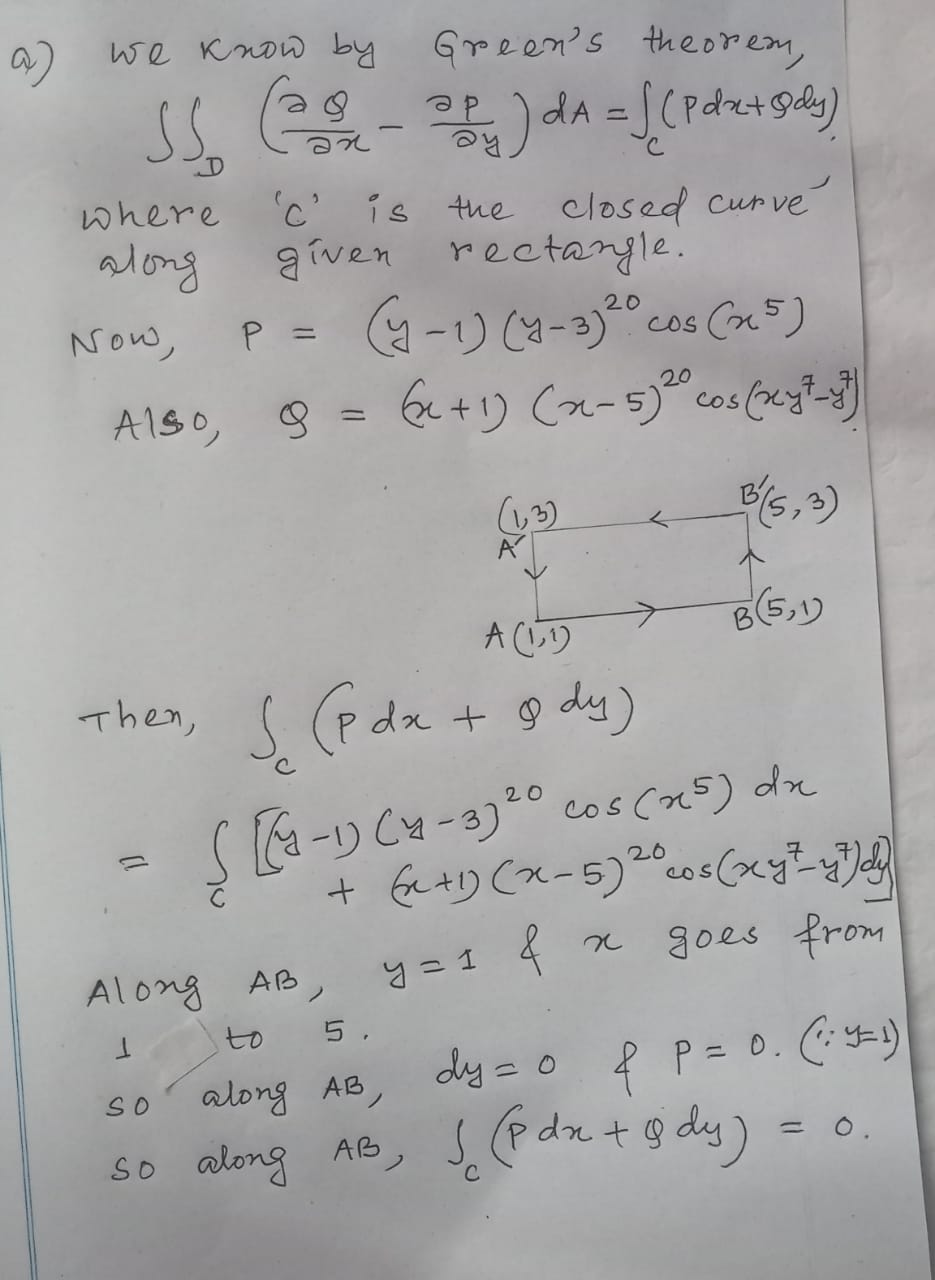cos(x5) and Q(x, y) = (x+1)(x − 5)²⁰ cos(xy7 — y²). Apply Green's Theorem to evaluate the double integral (a). Let P(x, y) = (y − 1) (y - 3)²⁰ - 3)20 166 (09-SP). ᎧᏢ dA, ду where D is the entire rectangle with the four corners at (1, 1), (5, 1), (5,3), (1, 3).
cos(x5) and Q(x, y) = (x+1)(x − 5)²⁰ cos(xy7 — y²). Apply Green's Theorem to evaluate the double integral (a). Let P(x, y) = (y − 1) (y - 3)²⁰ - 3)20 166 (09-SP). ᎧᏢ dA, ду where D is the entire rectangle with the four corners at (1, 1), (5, 1), (5,3), (1, 3).
Advanced Engineering Mathematics
10th Edition
ISBN:9780470458365
Author:Erwin Kreyszig
Publisher:Erwin Kreyszig
Chapter2: Second-order Linear Odes
Section: Chapter Questions
Problem 1RQ
Related questions
Question
By Green’s Theorem, sometimes it is easier to evaluate a line

Transcribed Image Text:cos(x5) and Q(x, y) = (x+1)(x − 5)²⁰ cos(xy7 — y²).
Apply Green's Theorem to evaluate the double integral
(a). Let P(x, y) = (y −
1) (y - 3)²⁰
- 3)20
166 (09-SP).
ᎧᏢ
dA,
ду
where D is the entire rectangle with the four corners at (1, 1), (5, 1), (5,3), (1, 3).
Expert Solution
Step 1

Trending now
This is a popular solution!
Step by step
Solved in 3 steps with 3 images

Recommended textbooks for you

Advanced Engineering Mathematics
Advanced Math
ISBN:
9780470458365
Author:
Erwin Kreyszig
Publisher:
Wiley, John & Sons, Incorporated

Numerical Methods for Engineers
Advanced Math
ISBN:
9780073397924
Author:
Steven C. Chapra Dr., Raymond P. Canale
Publisher:
McGraw-Hill Education

Introductory Mathematics for Engineering Applicat…
Advanced Math
ISBN:
9781118141809
Author:
Nathan Klingbeil
Publisher:
WILEY

Advanced Engineering Mathematics
Advanced Math
ISBN:
9780470458365
Author:
Erwin Kreyszig
Publisher:
Wiley, John & Sons, Incorporated

Numerical Methods for Engineers
Advanced Math
ISBN:
9780073397924
Author:
Steven C. Chapra Dr., Raymond P. Canale
Publisher:
McGraw-Hill Education

Introductory Mathematics for Engineering Applicat…
Advanced Math
ISBN:
9781118141809
Author:
Nathan Klingbeil
Publisher:
WILEY

Mathematics For Machine Technology
Advanced Math
ISBN:
9781337798310
Author:
Peterson, John.
Publisher:
Cengage Learning,

